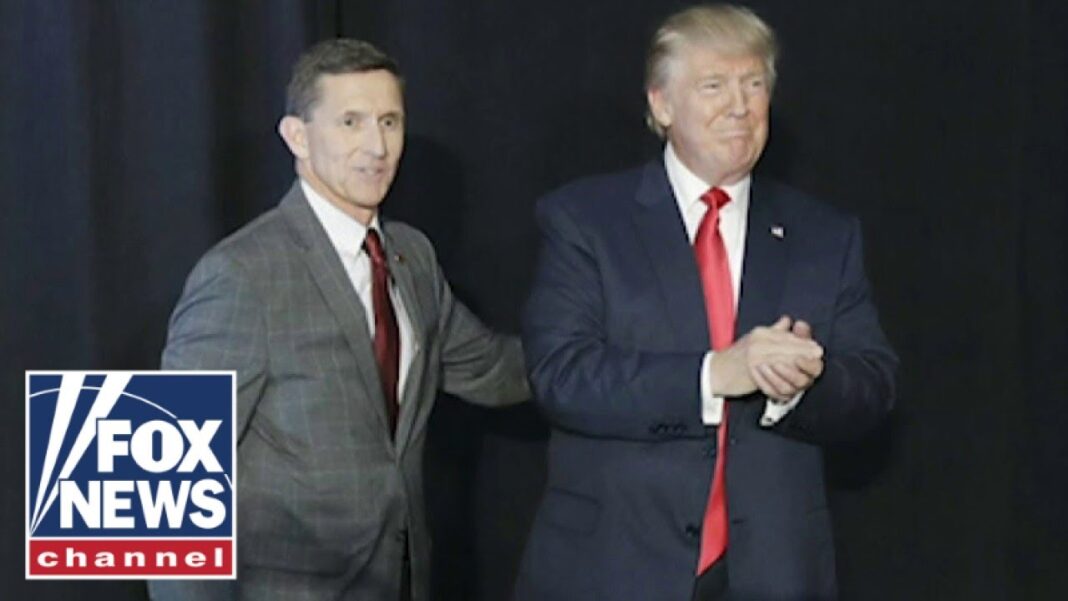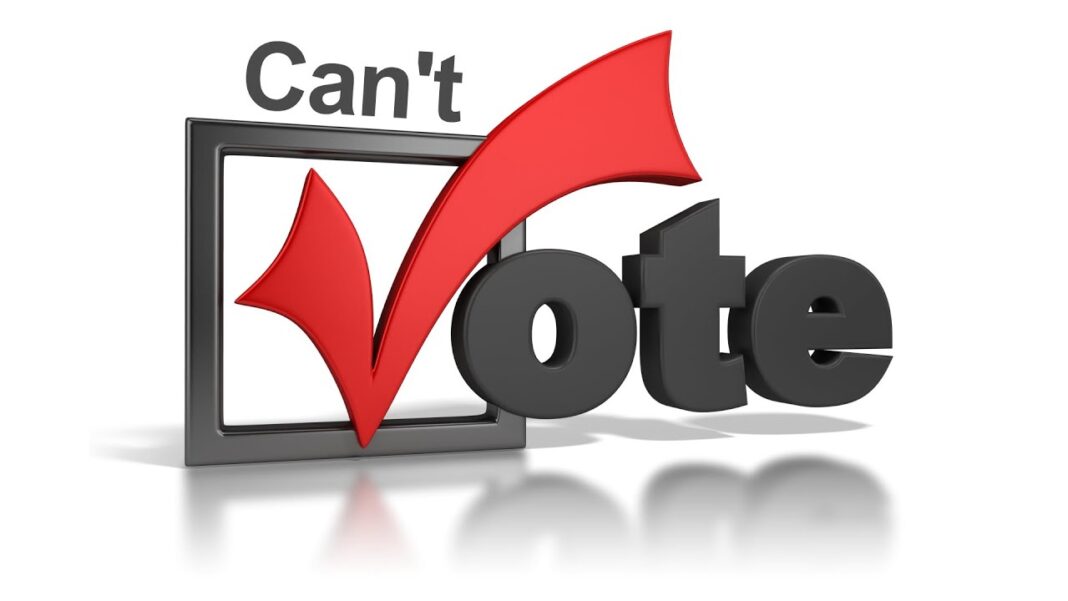With the D.C. Beltway awash in rumors that former President Trump will be indicted after the Nov. 8 midterms, the FBI may have “set a perjury trap” at Trump’s Mar-a-Lago home, according to his former national security adviser, Lt. Gen. Michael Flynn.
In June, the FBI suspected Trump hid classified papers from his presidential collection that it had subpoenaed on behalf of the National Archives, which sought them after Trump left the White House. Two months later, agents raided Trump’s Mar-a-Lago estate in Florida, seizing more than 11,000 documents, of which fewer than 1 percent were marked classified.
Now a federal grand jury is investigating whether Trump and his aides conspired to conceal the documents from agents and made false statements when certifying they produced all of them.
Flynn told RealClearInvestigations that the FBI and DOJ are using semantics to target Trump.
Flynn points out that FBI agents in a May 11 subpoena asked Trump for all documents in his custody “bearing classification markings,” as opposed to classified documents, which he says was a carefully worded distinction designed to trip up the former president.
The FBI declined to comment.
What’s the Difference?
Flynn says that Trump and the custodian of his records likely believed many documents were no longer classified or had classification markings that had been voided or revised. Therefore, he speculates, his lawyers searched for and turned over records they believed to still be classified, and in turn, certified that they were in full compliance with the subpoena.
Christina Bobb, one of Trump’s lawyers acting as the custodian of his records, certified in a sworn statement on June 3 that “any and all responsive documents” had been handed over and that none were withheld. It now appears that the statement was untrue, since many documents marked classified were still at Mar-a-Lago. Bobb, who has hired a criminal defense attorney, recently was questioned by prosecutors who reportedly want to know if Trump directed her to make the statement.
Flynn said that the parsing of the subpoena suggests trickery. He said agents and prosecutors were very clever asking for documents that bear classification markings rather than classified documents, which may have led Trump and his custodian into a “perjury trap.”
“The way they stated specifically what they were looking for—documents that have classified markings versus classified document—it is a semantics drill that a team of smart but corrupt lawyers in DOJ would come up with,” Flynn said in an interview with RCI.
“The FBI arrives and asks very specific questions and DJT’s lawyers think everything is fine when they leave,” he added. “But then they go back to a sequestered grand jury and the entrapment drill begins.”
Prosecutors used similar hedging words to describe the documents seized in the Mar-a-Lago raid. In an Aug. 25 court filing, Jay Bratt, the Justice official running the investigation, said that “the government executed a search warrant at the premises owned by the former president and seized documents marked as classified.” Again, he did not say they found classified information.
On June 3, Bratt and a handful of FBI agents visited Mar-a-Lago and picked up a batch of documents from Trump and his lawyers, while allegedly thanking them for their cooperation. They advised only that they add a more secure lock to the storage facility.
Flynn said it might as well have been a “sting operation.” If they thought additional documents remained there, he explained, they could have issued another subpoena for them. Instead, they secretly monitored Trump’s security camera footage for months before returning on Aug. 8 with an army of more than 30 armed agents who rummaged through every bedroom and closet at Trump’s home—including those of his wife and son.
Flynn said the FBI and Justice Department, who prosecuted him for lying to FBI agents, are using similar tactics against Trump. The charges against Flynn were later dropped, but the FBI and DOJ succeeded in pushing him out of the White House. “They are trying to set up the former president at Mar-a-Lago like they tried to set me up,” Flynn told RCI.
Flynn is not alone in his suspicions. Some FBI vets point to other signs their old agency may have played dirty pool at Mar-a-Lago. Former assistant FBI director Chris Swecker pointed to unredacted portions of the FBI affidavit supporting the search warrant which suggest that investigators may have set Trump up for failure. It turns out that Trump, by keeping the records at his estate, may actually have been complying with recent Justice Department directives not to move them.
“What stood out to me in the affidavit was how he was ordered to keep the records on the premises until further notice and then was hit with a search warrant because he kept the records on the premises,” Swecker told RCI.
The affidavit reveals that on June 8, Bratt wrote to Trump’s lawyer demanding that his papers remain in storage at Mar-a-Lago. “We ask that the room at Mar-a-Lago where the documents had been stored be secured and that all of the boxes that were moved from the White House to Mar-a-Lago (along with any other items in that room) be preserved in that room in their current condition until further notice,” the official requested.
But then several weeks later, the FBI asked a magistrate judge in West Palm Beach for permission to search Trump’s property because there was probable cause to believe that “presidential records remain at the premises,” according to the Aug. 5 affidavit.
What’s more, the affidavit complained that Trump’s locked basement storage facility and his office were “not currently authorized locations for the storage of classified information.” Added the Washington-based special FBI agent who swore out the warrant: “I do not believe that any spaces within the premises have been authorized for the storage of classified information at least since the end of FPOTUS’s [Former President of the United States’] presidential administration on Jan. 20, 2021.”
But Flynn and others say the FBI likely believed this to be the case because of the little-known fact that President Biden broke with longstanding tradition when he took office and ordered the intelligence community to stop giving intelligence briefings to his predecessor; that effectively decertified the special secure room known as a “SCIF”—Sensitive Compartmented Information Facility—which Trump had set up at Mar-a-Lago to receive daily intelligence briefings and classified reports when he vacationed there as president. All former presidents receive such briefings, which are conducted in such secure rooms they maintain in their home offices. But Biden argued that because Trump was “erratic,” he posed a potential national security threat. Biden therefore ordered he be cut off from receiving the same reports provided Bill Clinton, George W. Bush, and Barack Obama. As a result, DOJ appears to now be punishing Trump for allegedly storing and mishandling sensitive government documents in a room that was once authorized for such storage but only became unauthorized when Biden cancelled Trump’s classified briefings. That’s not Trump’s fault, Flynn argued. He said it was Biden’s actions that set Trump up for prosecutors to make the complaint against him.
Biden Involved
Despite repeated and unqualified White House denials that politics played any role in this drama, Biden was involved in the Mar-a-Lago fray. In April, correspondence reveals, the Justice Department asked the president to request that the National Archives provide the FBI access to boxes of documents Trump had earlier turned over to the White House-controlled agency. The next month, the FBI subpoenaed Trump for additional records. Nonetheless, Biden has insisted he and the White House were completely in the dark about the Mar-a-Lago raid and investigation.
Swecker doubts the government has a prosecutable case, judging from the affidavit and other court filings, which make clear the raid developed from a civil dispute between Trump and the National Archives, which says it is seeking missing presidential records.
He said he thinks Attorney General Merrick Garland, who personally approved the unprecedented action against a former president, was trying to publicly humiliate Trump ahead of the November midterm election, which features Trump-supporting Republicans in key races.
“I really think this case is un-prosecutable and was more of a thumb in Trump’s eye by Attorney General Garland,” Swecker said. It has been reported that Trump will announce his plans to run again in 2024 after Tuesday’s midterm elections.
Others, however, are convinced there is sufficient evidence to indict Trump on obstruction charges.
“Not only did Trump, through his team, falsely represent that all remaining classified documents were in the envelope they’d turned over, [but] prosecutors stress that the search ‘cast serious doubt on the claim in the certification that there had been a ‘diligent search’ for records responsive to the grand jury subpoena,’ “ said former federal prosecutor Andrew McCarthy, who defended Trump throughout the FBI’s and DOJ’s discredited Russiagate investigation.
Therefore, “I believe Trump is likely to be charged with obstruction of justice and causing false statements to be made to investigators,” he added.
Under the relevant federal statutes, however, prosecutors must prove that Trump “knowingly” concealed documents with the intent to obstruct the Mar-a-Lago investigation. Which is to say they have to produce evidence that the former president intentionally withheld subpoenaed records and that it wasn’t just an oversight.
So far, unsealed court filings do not indicate they have evidence of knowing concealment by Trump. Prosecutors have been careful to say in their filings that documents were “likely” concealed and that efforts were “likely” taken to obstruct the investigation, indicating they still lack solid evidence. And Trump is not mentioned as a target in any of the filings.
“It is not clear from the filing if the FBI has evidence of intentional acts of concealment as opposed to negligence,” George Washington University law professor Jonathan Turley said.
However, Bloomberg News recently reported that prosecutors “believe there is sufficient evidence” to charge Trump with obstruction, according to “people familiar with the matter” cited by Bloomberg. The outlet said the team of attorneys handling the case “has not yet made a formal recommendation” to Garland, who would make the final decision to bring charges in the politically radioactive case. The stakes couldn’t be higher. If the attorney general were to charge a former president, he and his reputation would be on the hook for the highest-profile criminal case in American history.
In a sign Garland might be serious about indicting Trump, he recently assigned David Raskin—one of the department’s most experienced national security prosecutors—to the Trump investigation. Raskin has successfully prosecuted federal employees who have kept classified documents unlawfully.
Prosecutors have questioned several aides, including the Trump lawyer who signed the certification letter and a Mar-a-Lago valet who allegedly moved documents from a storage room. Next, they plan to grill Trump’s representative to the National Archives, Kash Patel, about how Trump, his aides and his lawyers dealt with requests from the government to return the records. Patel, who declined comment, reportedly has agreed to testify before the grand jury in exchange for immunity from criminal prosecution. Jurors are deliberating in heavily Democratic D.C., increasing the odds of indictment.
As for the alleged false statements, legal analysts say the Trump team left wiggle room in the sworn certification when it claimed a “diligent” search was conducted. They note that “diligent” is a legally ambiguous term open to interpretation. And the government itself demonstrated that searching for the subpoenaed documents was like looking for needles in a haystack. It took some 35 agents searching Trump’s sprawling estate for several hours to locate just 100 with classified markings out of 11,000 documents seized, which suggests Trump’s custodian could have reasonably overlooked them.
Also, Trump’s presidential papers were “intermixed” in file boxes with newspaper and magazine articles, photos, various printouts, and other items making them difficult to identify. The National Archives said 15 boxes retrieved several months earlier from Mar-a-Lago contained “newspapers, magazines, print news articles, photos, miscellaneous print-outs, notes, presidential correspondence, personal and post-presidential records”—and most of the boxes included classified records that “were unfoldered, intermixed with other records, and otherwise improperly identified.”
Much speculation has been made of 46 “empty folders with classified banners” found in the FBI raid. In one recent court filing, investigators speculated that classified “materials may once have been stored in these folders,” suggesting Trump or his aides removed subpoenaed documents from the folders and secreted them elsewhere.
But legal analysts point out that it could also mean that Trump’s team previously turned over the contents of the folders to the Archives—or to FBI agents in June. Or it could mean the classified contents were mixed in with other files or loosely stored in file boxes with other documents, given that the Archives noted that it found classified records “unfoldered” in the 15 boxes Trump transferred to the Archives early this year. Or it could simply mean there was never anything in them.
Prosecutors have also raised suspicions Trump’s lawyers were trying to hide something when they allegedly cordoned investigators off from some boxes kept in a basement storage room during their June 3 visit.
Although agents were permitted to visit the storage room, “the former president’s counsel explicitly prohibited government personnel from opening or looking inside any of the boxes that remained in the storage room, giving no opportunity for the government to confirm that no documents with classification markings remained,” Bratt said in a court filing. A Democrat, Bratt has donated exclusively to fellow Democrats, as well as the DNC, according to FEC records.
Trump’s legal team has told the court that DOJ “significantly mischaracterized” the June meeting with Bobb and another lawyer, but did not elaborate.
History of Animus
Whatever the truth of what happened at Mar-a-Lago, it is clear there is a history of animus between federal law enforcement and Trump and his aides.
As one of the FBI’s and DOJ’s original Trump-era targets, Flynn is understandably suspicious that they may be engaging in similar skulduggery now, possibly setting Trump up in the Mar-a-Lago imbroglio.
It appeared to many that the FBI broke normal protocols and essentially set a perjury trap for Flynn in early 2017, when it sent agents to the White House to question Trump’s newly appointed national security adviser over his December 2016 calls with Russia’s U.S. ambassador during the presidential transition. In those conversations, which then-FBI Director James Comey privately described as “legit,” indicating there was no real basis for investigation, Flynn urged Russia not to engage in an escalating tit-for-tat with the outgoing Obama administration, which had just issued sanctions against Moscow for allegedly interfering in the 2016 election.
A declassified FBI email from counterintelligence official Peter Strzok dated Jan. 21, 2017—the day after Flynn took office—reveals that the FBI schemed to use a “defensive briefing” on a national security issue for Flynn as a “pretext” to interviewing him about the phone calls, which the FBI had intercepted, and catching him in a lie. Making false statements to a federal agent is a felony.
Handwritten notes from Strzok’s then-immediate boss Bill Priestap reveal the intent of their planned Jan. 24 meeting with Flynn inside the White House. “What is our goal? Truth/Admission or to get him to lie, so we can prosecute [Flynn] or get him fired?” Priestap wrote.
For such a serious legal matter, the FBI’s own protocols would have entailed going through the White House counsel’s office. Instead, it arranged the meeting directly with Flynn, who was flattered to speak with two national security agents and was unguarded in answering their questions. Going in, the FBI agreed not to suggest Flynn bring a lawyer to the interview. And they never instructed him that any false statements he made could constitute a crime.
Years later, Comey would brag about sending agents in to ambush Flynn and get him to allegedly lie about his conversations with the ambassador. “I sent them,” he told MSNBC’s Nicolle Wallace during a 2018 forum.
He acknowledged the way the meeting was set up—going around White House lawyers –was not standard practice. He described it as “something I probably wouldn’t have done or maybe gotten away with in a more organized administration.”
Explaining how it is usually done, Comey said, “If the FBI wanted to send agents into the White House itself to interview a senior official, you would work through the White House counsel, and there would be discussions and approvals and who would be there.”
Recalling his decision to bypass those steps, Comey said with a grin, “I thought: ‘It’s early enough [in the newly seated, green Trump administration], let’s just send a couple guys over.’”
The FBI interview served as the basis for pressuring Flynn’s guilty plea to making false statements in a deal with Special Counsel Robert Mueller’s prosecutors. Flynn got a presidential pardon in 2020 and the criminal case against him was dismissed as moot.
A declassified summary of a 2020 interview with one of the Washington case agents involved in the Flynn investigation revealed Flynn was politically targeted to hurt Trump. FBI special agent William Barnett said he believed the prosecution of Flynn was unnecessary and merely used as a means to “get Trump.”
By Paul Sperry







